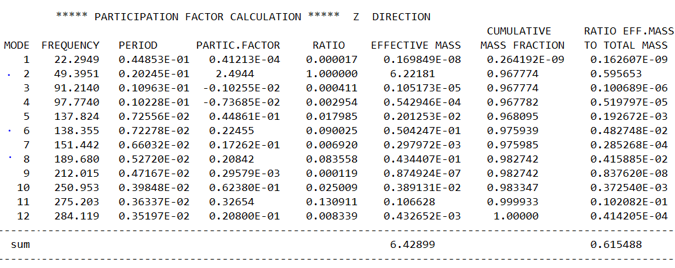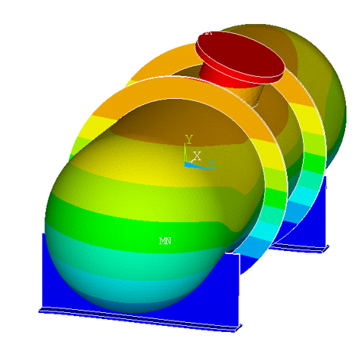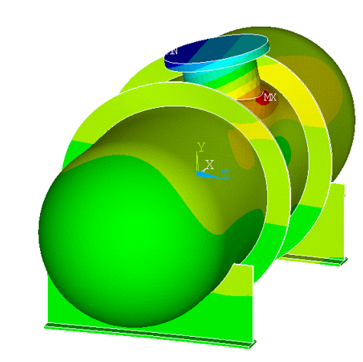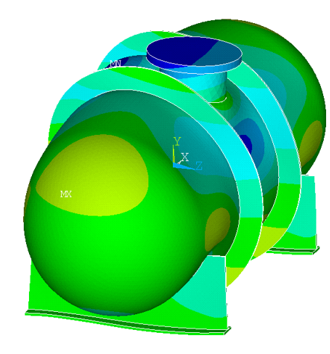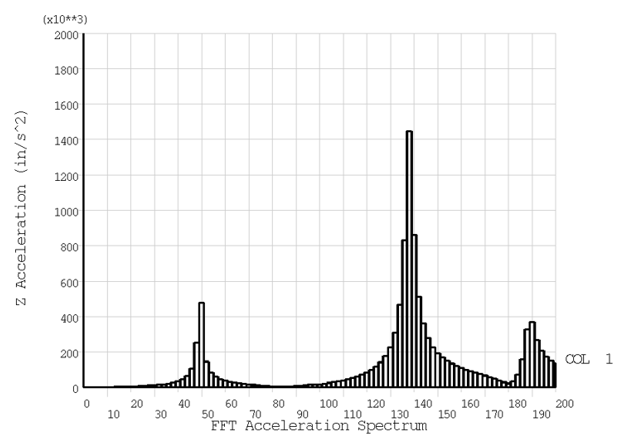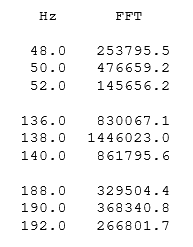The following results and discussion topics are available:
The following figures show that modes 2, 6 and 8 have a significant mass participation in the Z direction (the loading direction). The FFT results should match their frequencies of 49.4 Hz, 138.4 Hz and 189.7 Hz.
The following transient acceleration time-history is used as input for the FFT calculation:
Like a PSD spectrum, the FFT output is the acceleration content of the input signal over a set of frequency ranges or bins:
Bin 1 is the DC or 0 Hz bin. (If the response includes rigid-body motion, it too contributes to this bin.)
Bin 2 is the one-cycle response.
The frequency associated with a bin is determined by dividing the number of cycles by the duration of the signal. Because the number of cycles is divided by the transient length, running a shorter transient reduces the frequency resolution by creating wider spacing of the frequencies. For example, a 0.1-second transient produces bin frequencies of 0hz, 10hz, 20hz, 30hz, etc.
In practice, it may not be practical to sample for a duration as long as 0.5 seconds. For shorter durations, the frequency can be interpolated or the sample function can be repeated (possibly with some modification to remove a step change going from the end of the signal to the beginning of its repeat.)
The time-step size also affects accuracy. If the specified time increment is too large, the accuracy of the higher frequencies is degraded. For example, using a time increment of 1.0e-3, the FFT peak for the second mode drops from 138 Hz to 130 Hz, and the third mode drops from 190 Hz to 172 Hz. (The period of a 190 Hz mode is 5.3e-3 seconds, so a 1e-3 time step provides only five sample points per cycle.)
Visually and from the Z direction participation factors, it is expected that modes 2, 6 and 8 will be excited by the FZ impact force.
The following FFT results predict a frequency slightly below 50 Hz, slightly above 138 Hz, and slightly below 190 Hz:
The FFT results agree with the frequencies calculated in the modal analysis.[2]
[2] Results occur at 2 Hz intervals due to an end time of 0.50 seconds (as integer bin numbers are divided by the end time to convert to frequency).



